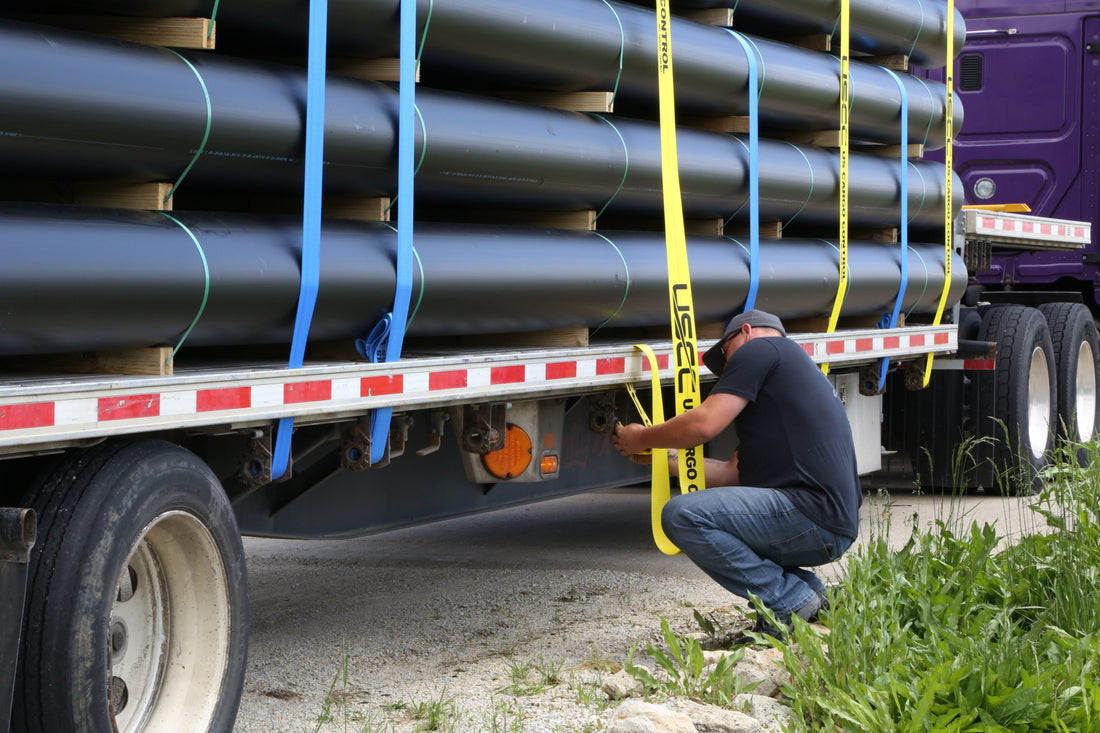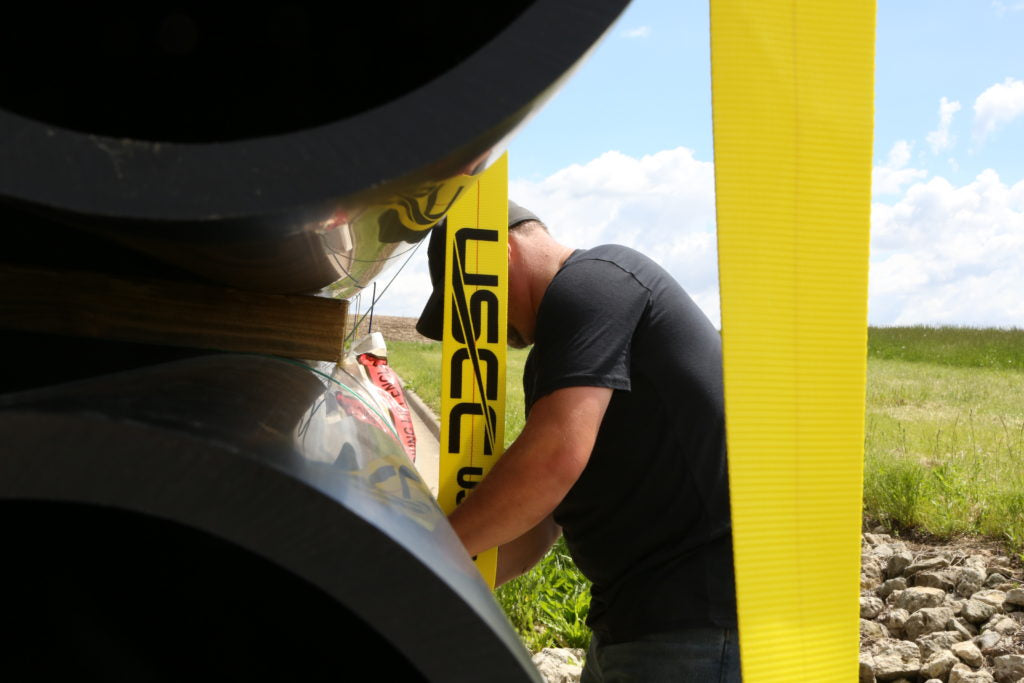
The Dos and Don'ts for Load Securement on Trailers
When you're hauling cargo on your trailer, you can make or break it. If you're not aware of how you are strapping down a load, you could create risk or damage to the cargo, others around you, and even yourself. To avoid these consequences, we sat down with Tim Sanders, our Sales Specialist, to learn about the dos and don'ts of load securement on trailers.
To ensure you are using the right equipment, look at our products that you can shop for your trailer type. Watch a demonstration by Ed Duran, one of our Sales Specialists, on how to secure an item with a ratchet strap.
1. Have the Appropriate Type and Amount of Securement Equipment

One of the most important considerations to know when securing a load is ensuring you have the appropriate type and amount of securement equipment. Whether you own a flatbed trailer or an enclosed trailer, you can haul all types of goods. The key is knowing which type of hauling equipment is crucial for the cargo you are hauling. To learn more about what hauling equipment you need, read:
3 Types of Accessories Every Enclosed Trailer Hauler Should Have
5 Pieces of Flatbed Trailer Equipment a Truck Driver Should Have.
2. Use the Right Amount of Working Load Limit and Tiedowns for Load Securement

It's critical that the number of straps, chains, and other equipment in use has enough aggregate working load limit (WLL) to secure the cargo being hauled. When you are tightening your items, be aware of the WLL and breaking strength so you know how much weight that piece of rigging is capable of securing. Learn more about what working load limit, break strength, and safety factor means on a piece of rigging equipment.
It's also important to note that you have the appropriate number of tiedowns for your task. A general rule is you only use one tiedown if your cargo is shorter than 5 feet and less than 1,000 pounds. If you are hauling more than 1,000 pounds, read how many ratchet straps you need to secure your cargo.
3. Inspect Tiedowns for Damage and Defects Before Securing Cargo

A general rule to keep in mind is inspecting your straps for any damage and defects. Even if you notice minor damage to the strap, the strap's capability and value will reduce. If you do see damage or are uncertain that there is damage, you must not use that tiedown. For more information about standards and inspection criteria, go to WSTDA (Web Sling and Tie Down Association) and NACM (National Association of Chain Manufacturers).
To prevent future damage, continuously check your tiedowns when you're on the road. It is common for cargo to shift and the straps to loosen in transit, so it doesn't hurt to see if they are secure (and you will avoid the chance of more damage).
Also, store them in a clean, dry place when you're not using the tiedowns. If they are exposed to sun, rain, road salt, or else, tiedowns can degrade and will lose their effectiveness.

There’s no such thing as overdoing it when it comes to tying everything down. Plan ahead, make sure you have enough equipment to get the job done right, and inspect it frequently. A load that is well secured with good equipment will keep everyone safe and eliminate a lot of headaches during a roadside inspection!
Tim Sanders, Sales Specialist
4. Protect Your Straps with Corner Protectors

There will be sharp edges and rough surfaces when you are securing an item to your trailer. You don't want to add stress to the strap by tightening it on a sharp edge or rough surface because you may cause cutting and abrasion. Consider using corner protectors to protect your straps. They will extend the life of your ratchet straps and also protect your cargo, chains, tarps, and more.



